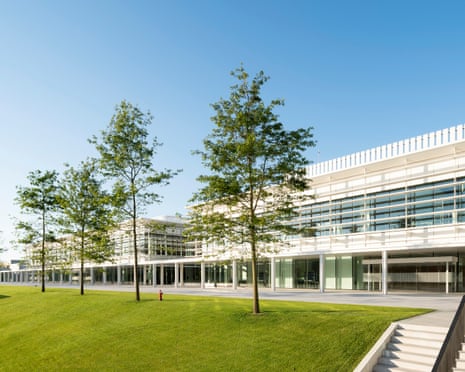In Arteixo, northern Spain, workers are putting the final touches on a new global headquarters for Zara, the fashion brand that has reached its 50th anniversary. This site, featuring a private high street to test new store concepts, is a short distance from where Amancio Ortega opened his first store in La Coruña in 1975. From these modest beginnings, Inditex has grown into a fashion empire encompassing seven brands, including Zara, Massimo Dutti, and Bershka, with over 5,500 stores in 98 countries and an online presence in 116 more.
Zara, known for its budget-friendly yet stylish offerings, has been a favorite among high-profile individuals like the Princess of Wales and Taylor Swift. Its founder, Ortega, started as a delivery boy and rose to become one of the world’s wealthiest individuals, with a net worth of approximately $120 billion. Today, more than 160,000 people work for Inditex, with over 5,000 at the Arteixo headquarters, contributing to sales of €38.6 billion and profits of €7.6 billion last year.
Challenges and Strategic Shifts
As Inditex celebrates this milestone, it faces challenges, including a slowdown in sales growth to 4.2% in the most recent quarter, down from 10.5% previously. The company has also reduced its store estate, closing a net 136 stores over the past year. This comes after a leadership change, with Marta Ortega Pérez becoming chair and Óscar García Maceiras taking over as CEO.
Despite these challenges, García Maceiras remains optimistic about Inditex’s future. He emphasizes the company’s strategy of expanding store space by 5% this year, focusing on larger outlets. In the UK, Zara will reopen a significantly larger store at Manchester’s Trafford Centre, while Bershka and Stradivarius plan new openings in Glasgow and Newcastle.
Global Expansion and Market Adaptation
Inditex continues to see the UK as a vital market, despite potential tax increases that could impact store openings and employment. Similarly, in the US, the company’s second-largest market, Inditex is prepared to adjust its supply chain to navigate potential tariffs. García Maceiras does not rule out future manufacturing in the Americas, highlighting the company’s adaptability.
Inditex’s success is attributed to its unique model of producing stock in small quantities, with rapid turnaround times. This flexibility allows the company to respond quickly to market trends and customer demands, setting it apart from competitors like Shein and Temu.
Innovation and Customer Engagement
The company’s new store designs aim to attract a broader range of customers with premium products and an upmarket feel. Technological advancements, such as automated systems for returns and smart tags for efficient checkout, enhance the shopping experience. Inditex is also experimenting with in-store cafes and other services to increase customer engagement.
“This is a market so highly fragmented that your level of success could depend basically on your own capacity of spotting trends and executing those,” García Maceiras states, emphasizing the importance of innovation and customer insight in the fashion industry.
As Inditex moves forward, its focus on constant innovation and adaptation is crucial to maintaining its position in the competitive fashion landscape. García Maceiras believes that this mindset will ensure the business remains vibrant as it enters its next phase.
 Nescafe Faces Supply Shortages: Frothy Coffee Fans Left Disappointed
Nescafe Faces Supply Shortages: Frothy Coffee Fans Left Disappointed Cookstown Road Closure for PSNI Scene Testing After Fatal Crash
Cookstown Road Closure for PSNI Scene Testing After Fatal Crash Cattle Markets React as U.S. Reopens Border with Mexico
Cattle Markets React as U.S. Reopens Border with Mexico Court Rejects Johnson & Johnson’s 340B Drug Discount Rebate Plan
Court Rejects Johnson & Johnson’s 340B Drug Discount Rebate Plan Max McBrayer Appointed CEO of NATSO, Leading the Future of Truck Stops
Max McBrayer Appointed CEO of NATSO, Leading the Future of Truck Stops